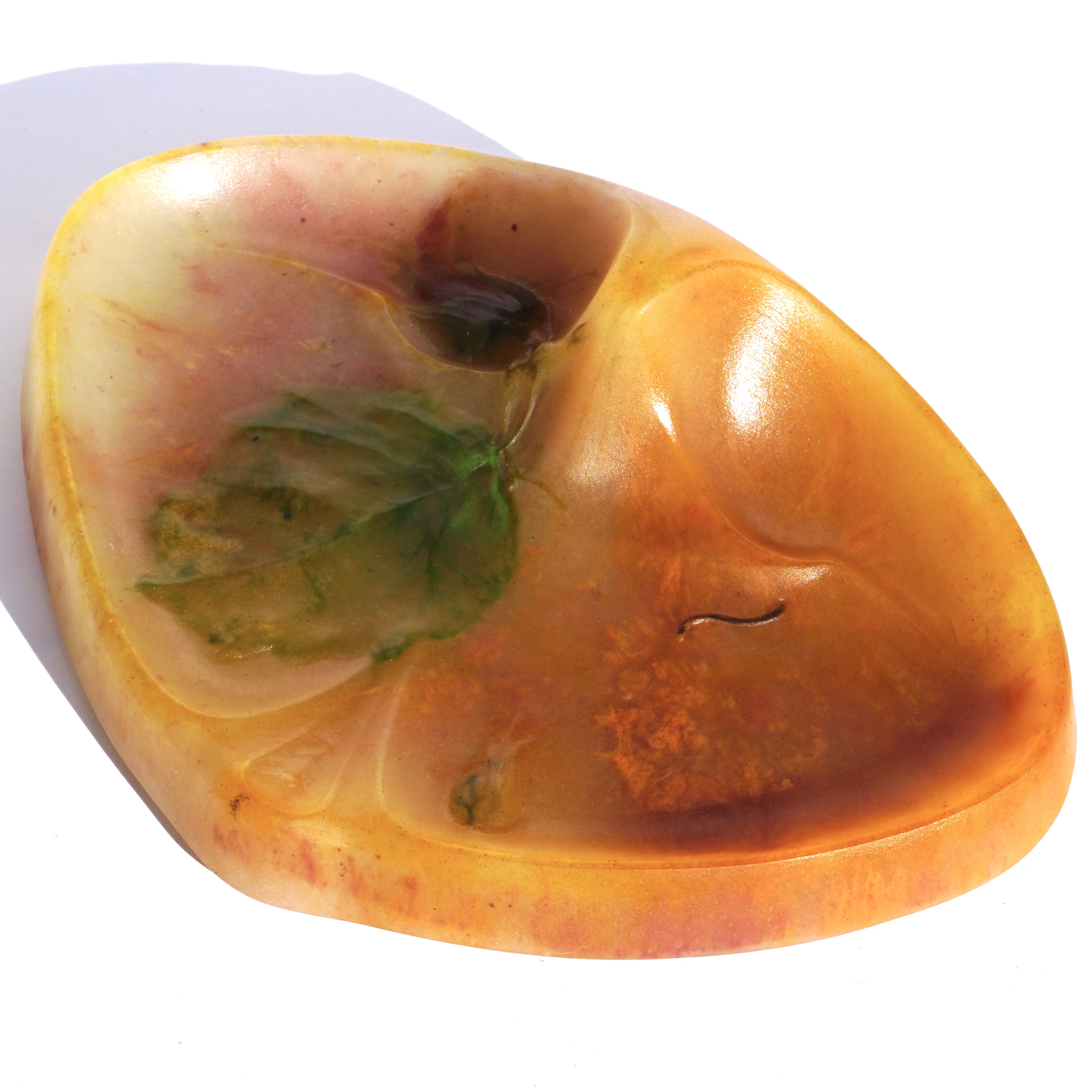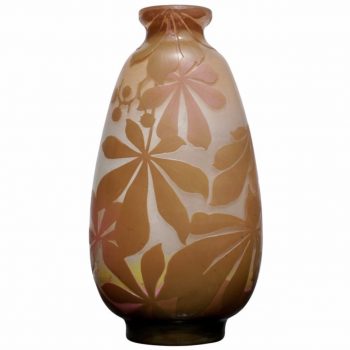Description
A very rare Art Nouveau Daum Nancy pate de verre ‘Noisettes’ vide poche in orange, reds, greens and yellows. Daum in Nancy was integral is originating the Art Nouveau design of nature in motion through glass, wood and other mediums. This example is excellent condition with beautiful colors and the quintessential Art Nouveau form and design. Representing nature through hazelnuts and leaves on a leaf form live curvilinear glass base, circa 1910,
Measures: Width 8.2 inches (21 cm) Depth 5.5 inches (14 cm) Height 2 inches (5 cm)
Signed: DAUM, Cross De Lorraine, NANCY. On center underneath
Daum Nancy:
Daum is a crystal studio based in Nancy, France, founded in 1878 by Jean Daum[1] (1825–1885). His sons, Auguste Daum (1853–1909) and Antonin Daum (1864–1931), oversaw its growth during the burgeoning Art Nouveau period. Currently Daum is the only commercial crystal manufacturer employing the pâte de verre (glass paste) process for art glass and crystal sculptures, a technique in which crushed glass is packed into a refractory mould and then fused in a kiln.
The Daum family worked at the beginning of the Art Nouveau era and created one of France’s most prominent glassworks. Established at the end of the 19th century, Daum’s renown was originally linked to the École de Nancy and the art of pâte-de-cristal, a major contributing factor in terms of its worldwide reputation.
During the Universal Exhibition of 1900 Daum was awarded a ‘Grand Prix’ medal. Daum glass became more elaborate. Acid etching (by Jacques Grüber) was often combined with carving, enamelling, and engraving on a single piece of glass to produce creative glass masterpieces.[citation needed] The most complicated creations also featured applied glass elements, such as handles and ornamental motifs in naturalistic forms.
The Daum brothers soon became a major force in the Art Nouveau movement, seriously rivalling Gallé, so much so that when Émile Gallé died in 1904 they became the leaders in the field of decorative glass. In 1906 Daum revived pâte de verre (glass paste), an ancient Egyptian method of glass casting, developing the method so that by the 1930s Daum’s window panels used pâte de verre for richness instead of leaded or painted glass.
Today Daum still uses this method to produce their pieces. More than 600 glasswork items are in the Daum Collection at the Museum of Fine Arts of Nancy (Nancy Musée des Beaux-Arts), which documents the history of glass manufacturing from the 1880s through the 1990s.
















